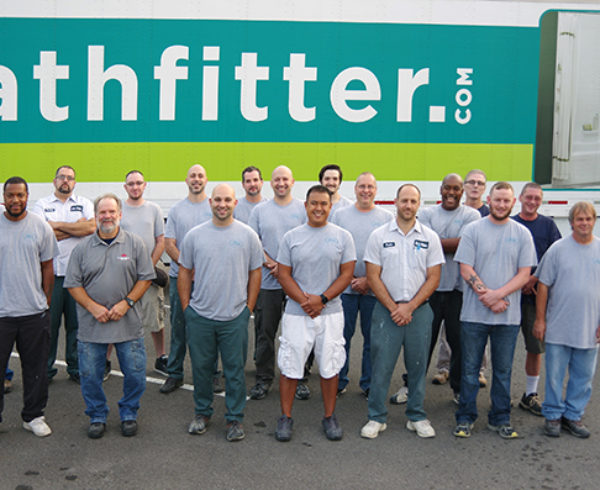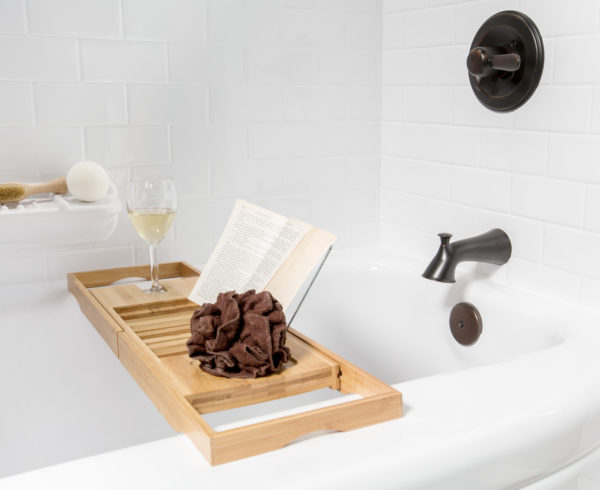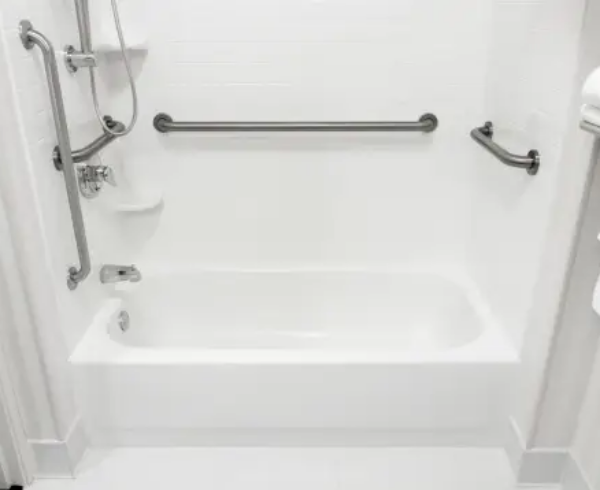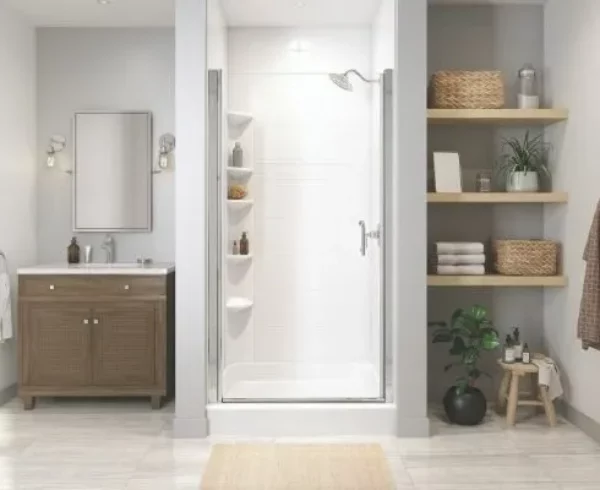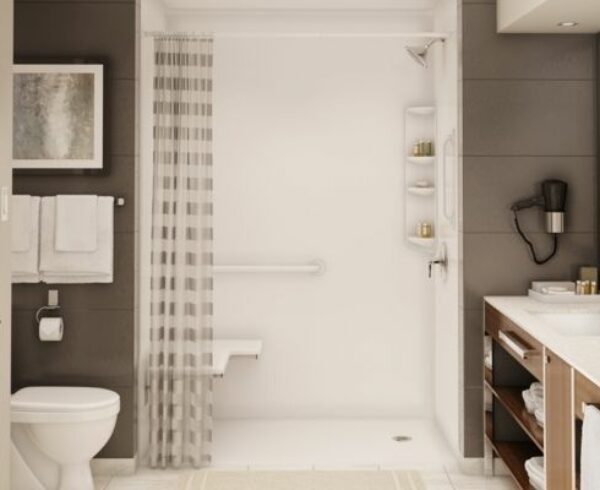Walk-in tubs provide a safe and accessible bathing solution for people with mobility challenges to help lower the risk of falling. Unlike regular tubs, it uses doors to allow easy access. However, this feature raises understandable concerns about leaks. It’s true – issues around the door seals tend to be the most common source of leaks. But don’t worry – with smart choices and proper care, leaks can be prevented.
In this article, we are going to answer the question, “Do walk-in tubs leak?”, what causes leaks in walk-in tubs, and how to keep walk-in tubs water-tight so you can enjoy your walk-in tub with confidence for years to come.
Do Walk-in Tubs Leak?
Understanding Walk-In Tubs
1. What are walk-in tubs?
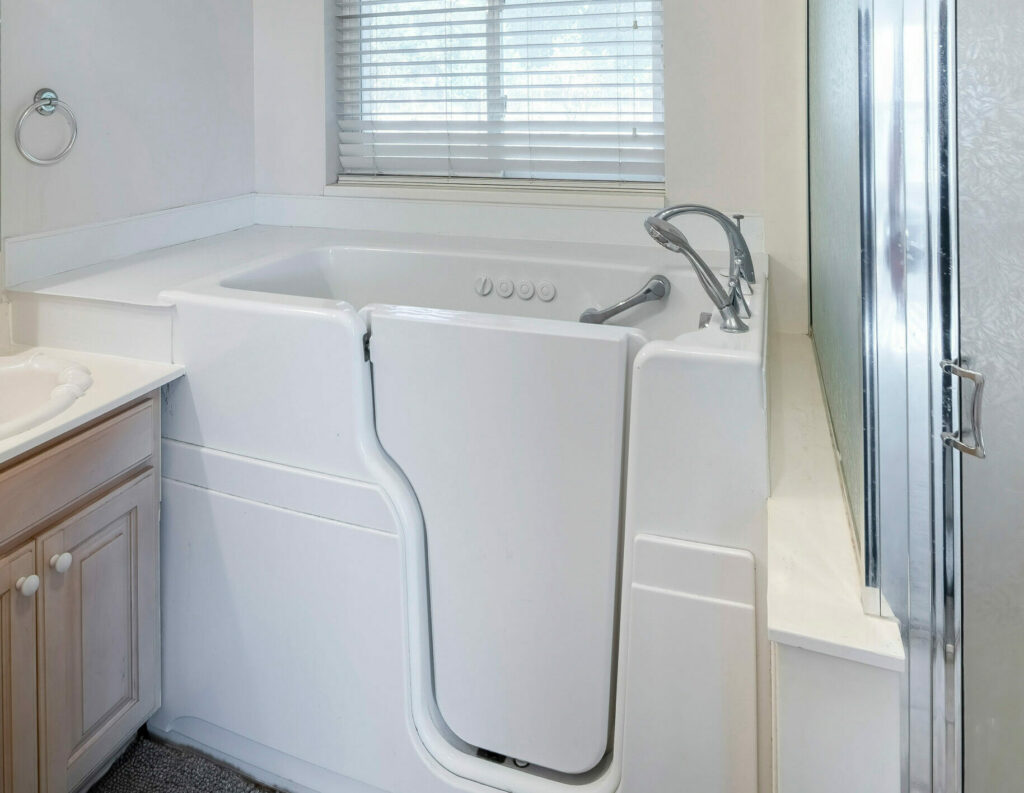 Before we jump into the leak concerns, let’s establish what walk-in tubs are. Walk-in tubs are bathtub variants featuring a seat and a door, allowing users to enter without the need to step over the side. Walk-in tubs are specially designed for individuals with mobility challenges, making bathing safer and more accessible.
Before we jump into the leak concerns, let’s establish what walk-in tubs are. Walk-in tubs are bathtub variants featuring a seat and a door, allowing users to enter without the need to step over the side. Walk-in tubs are specially designed for individuals with mobility challenges, making bathing safer and more accessible.
2. Features of walk-in tubs
A walk-in tub is quite different from traditional bathtubs in its features. Unlike standard tubs, these tubs come with a convenient door. Another main difference is that walk-in tubs have seats and much lower step-in thresholds, which allow users to enter without the need to lie down. Walk-in tubs prioritize the safety and comfort of the users by adding features like handrails and non-slip surfaces. Plus, these tubs do more than average bathtubs—they can team up with showers, fit two with dual seating, and even throw in water or air jets for a spa-like soak.
Water-Tight Design
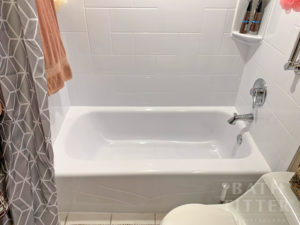 1. Sealing and construction
1. Sealing and construction
Walk-in tubs are constructed from steel or acrylic and assembled to meet rigorous water-tight standards. The door forms a tight seal with an internal gasket or external magnetic seal. Walls and access panels utilize water-tight sealing methods as well. Internal frames provide structural reinforcement.
2. Quality assurance and certifications
Reputable walk-in tub brands comply with plumbing codes and accessibility certifications like The Americans with Disability Act (ADA). These certifications ensure that the tubs meet quality and safety standards. Moreover, these tubs undergo factory water testing before shipping. When you think about a walk-in tub, please make sure to check for these certifications. They’re like a stamp of approval, showing that the tub is designed to be watertight and of high quality.
Potential Causes of Leaks
To answer the question, “Do walk-in tubs leak?”, they can, but due to a wide variety of causes. Some are due to the tub’s age while other causes are from the installation process.
1. Installation errors
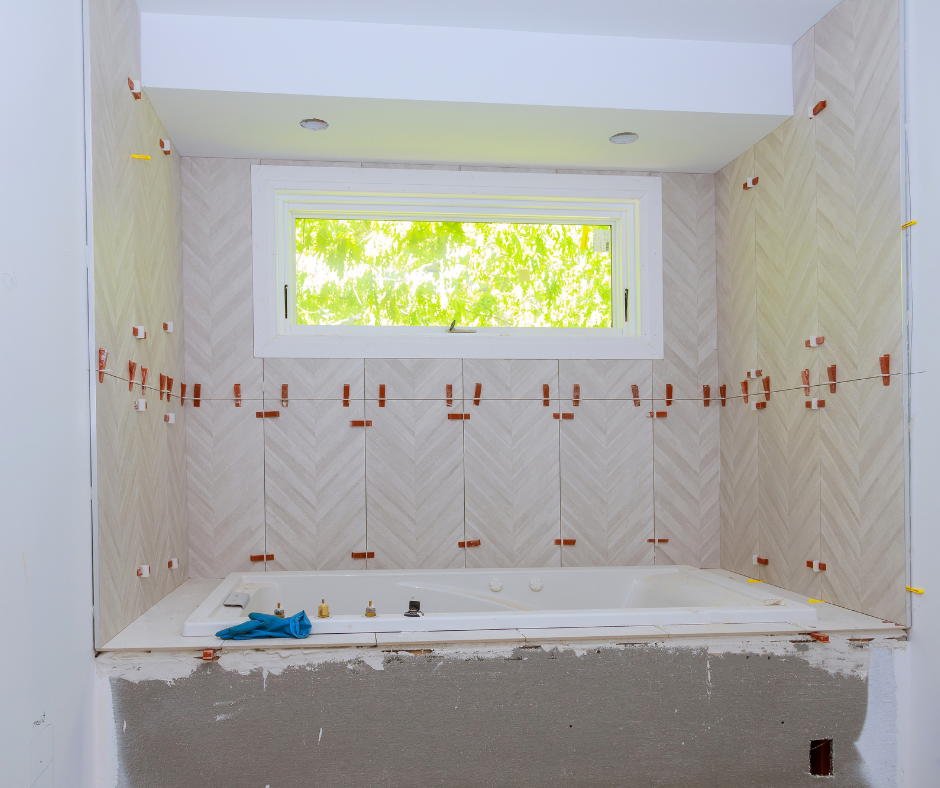 Leaky walk-in tubs can often be traced back to faulty installation. If the tub is not put in properly, problems like misaligned doors or poorly sealed joints may pop up, leading to water leaks over time. The key to tackling this issue is hiring qualified professionals for the job. They know the ins and outs of these specialized tubs, reducing the risk of installation errors that could lead to leaks down the line.
Leaky walk-in tubs can often be traced back to faulty installation. If the tub is not put in properly, problems like misaligned doors or poorly sealed joints may pop up, leading to water leaks over time. The key to tackling this issue is hiring qualified professionals for the job. They know the ins and outs of these specialized tubs, reducing the risk of installation errors that could lead to leaks down the line.
2. Wear and tear
Another reason for leaks is the natural wear and tear over time. Parts like seals and joints may wear out, putting the water-tight seal of the tub at risk. Regularly checking and swapping out worn-out components are key steps in addressing wear and tear issues, preventing leaks from becoming a headache.
3. Poor maintenance
Neglecting routine upkeep can increase the chances of leaks in walk-in tubs. Skipping essential maintenance tasks, like regular cleaning or checking on seals, sets the stage for potential leaks. To steer clear of this, sticking to a simple maintenance routine that involves regular cleaning, inspections, and fixing any wear and tear signs is crucial for keeping walk-in tubs leak-free.
Detecting and Addressing Leaks
 1. Signs of a leak
1. Signs of a leak
Spotting signs of a leak in your walk-in tub is crucial for early intervention. Please be sure to keep an eye out for dampness around the tub, unusual discoloration, or a musty odor. These signals can indicate potential leaks, so you’ll need to take action before the problem escalates.
2. DIY troubleshooting
Start with these simple fixes before calling for professional service for minor leaks. First, ensure door seals are clear of buildup and make consistent contact all the way around. Check caulking around the base and access panels, reapplying if needed. Listen for running water when the tub is filled to detect leaks. Tighten any leaky piping connections with an adjustable wrench and replace any worn or damaged door gaskets or seals causing water to escape.
3. Professional repairs
For more complex leak issues, it’s advisable to seek professional repairs. Experienced technicians can conduct a thorough assessment, identify the root cause of the leak, and implement comprehensive solutions. While DIY troubleshooting is helpful for minor concerns, professional repairs ensure a complete and lasting fix for more significant leakage issues.
Preventing Leaks
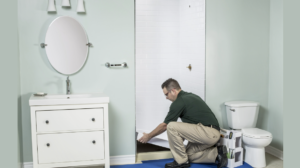 1. Proper installation
1. Proper installation
It all starts with proper installation when it comes to preventing leaks in your walk-in tub. Ensure you hire qualified professionals for the job. They know the ins and outs of these specialized tubs, reducing the risk of installation errors that could lead to leaks down the line. Trusting the pros is your first line of defense.
2. Regular maintenance
Simply follow the manufacturer’s recommendations to keep your walk-in tub in top shape. After each use, grab a towel or squeegee to wipe away excess water—this quick step works wonders in preventing potential issues. And, of course, stick to the approved cleaning products suggested by the manufacturer. Straying from this might put your guarantee at risk. These little actions ensure a smooth and enduring experience with your walk-in tub.
3. Quality products
Not all walk-in tubs are created equal. Invest in reliability by choosing well-known brands and models. Quality products provide a better bathing experience and contribute to leak prevention. Trusted brands have a reputation for designing tubs that stand the test of time, minimizing the risk of unexpected leaks.
Warranties and Guarantees
 Never underestimate the importance of warranty registration—your walk-in tub’s insurance policy. A registered warranty ensures you’re covered for any manufacturing hiccups or unexpected problems. However, before you even begin, consider a reputable manufacturer that backs its product with a limited lifetime warranty.
Never underestimate the importance of warranty registration—your walk-in tub’s insurance policy. A registered warranty ensures you’re covered for any manufacturing hiccups or unexpected problems. However, before you even begin, consider a reputable manufacturer that backs its product with a limited lifetime warranty.
End Note
In conclusion, while Bath Fitter doesn’t handle the installation of walk-in bathtubs, our specialization lies in installing walk-in showers with added safety features like seats and grab bars. Our ADA-compliant walk-in shower solutions ensure that anyone can confidently step into their shower easily, enhancing accessibility and comfort.
If you still need to decide which option is best for you, feel free to reach out to us. Our team of experts will be more than happy to provide recommendations on the type that suits your needs and offer guidance on installing and properly caring for them.


